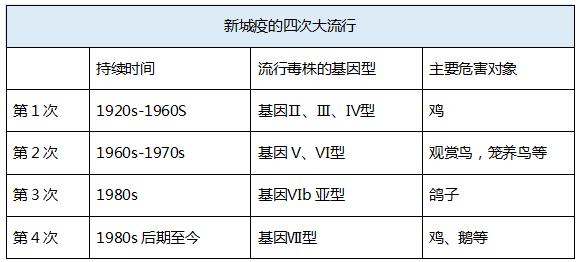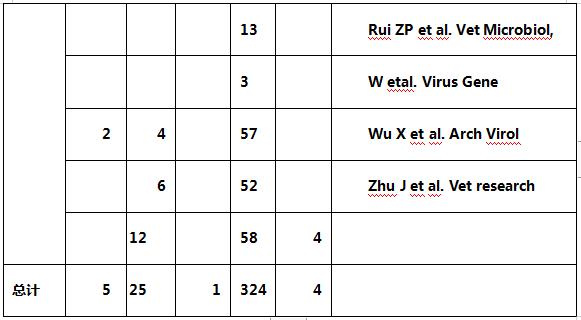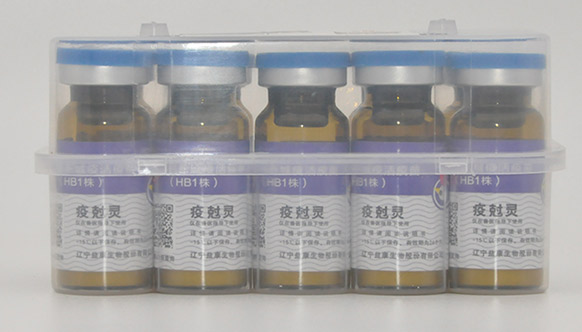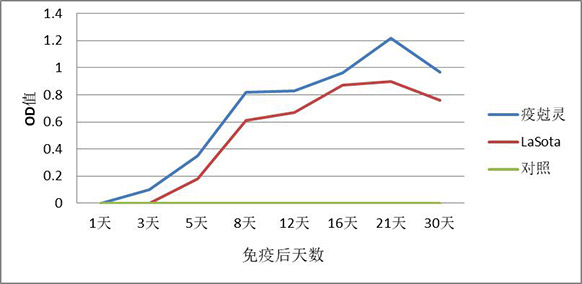1、 Introduction to Newcastle disease
Newcastle disease (NDV) is a highly contagious avian disease caused by a virulent strain of NDV. The world organization for animal health (OIE) listed it as an animal disease that must be reported, and China classified it as a kind of animal disease. The disease has strong infectivity and high fatality rate, causing great economic losses to poultry industry.
Newcastle disease virus (NDV) belongs to Paramyxoviridae, Paramyxoviridae and mumps virus. There is only one serotype, i.e. avian paramyxovirus type I. According to the genomic sequence and genetic variation, Newcastle disease virus can be divided into class I and class II. Among them, class I is mostly non pathogenic; class II can be divided into nine genotypes, all of which have pathogenicity, but the virulence varies greatly.

Genotype distribution of NDV virulent isolates in China since 2006


A total of 359 Newcastle disease virulent strains were reported from 2006 to 2015, of which 324 strains were type VII virus, accounting for 91% of the total isolates. In addition to 25 pigeon strains, 97% (324 / 334) of chickens and geese were type VII.
2、 The epidemic characteristics of Newcastle disease were as follows
At present, the epidemic characteristics of Newcastle disease in China are as follows: the number of epidemic cases is decreasing year by year; the virulent carrying rate of Newcastle disease in poultry is gradually decreasing; the pathogens are diverse; the atypical Newcastle disease and immune carrying phenomenon are common, and immunization failure occurs from time to time; the virus pollution in the environment is serious, and it is endemic in local areas. Due to the widespread use of vaccines, typical Newcastle disease is rare, and atypical Newcastle disease is more. The incidence age of adult chickens and commercial broilers was mainly 25-35 days old, and the incidence in laying period was more than 250-300 days old, mixed infection increased.
Since 1990, the atypical nd in immunized chickens has been caused by genotype VII strain, which is characterized by decreased egg production and egg quality of laying hens (layers and breeders), mild clinical symptoms and low mortality.
3、 Type of vaccine:
There are many kinds of Newcastle disease vaccine, including live vaccine, inactivated vaccine, subunit vaccine, transgenic plant vaccine, live vector vaccine and genetic engineering vaccine. Live vaccine, also known as attenuated vaccine, is made of natural attenuated strain or weakened virulent strain. Because of its good effect, it is the most commonly used vaccine in the market. The commonly used systems are series I, II, III and IV. The virulence of strains Ⅱ, Ⅲ and Ⅳ is weak, which is generally used for the first immunization of chickens.
The inactivated vaccine, also known as dead vaccine, is safe to use and has no risk of spreading the virus. Moreover, the immune effect can be guaranteed. The greatest advantage is that it can be made into a combined vaccine or a multivalent vaccine.
4、 The characteristics of yikeling are as follows

Yikeling vaccine is made from the selected vaccine which is highly matched with the current epidemic Newcastle disease virus, which is proliferated by SPF chicken embryo and freeze-dried with freeze-drying protective agent.
It can break through the high level of maternal antibody and resist the attack of gene VII Newcastle disease epidemic strain.
Special effect on atypical Newcastle disease.
Strong mucosal immunity is produced rapidly after vaccination. It can be used for emergency immunization, eye drops, nose drops or drinking water.
The vaccine is purer and produced by SPF chicken embryo without exogenous pathogen pollution.
The titer of the vaccine is higher, and the virus content of each vaccine is more than 106.5eid50
It has been widely recognized by customers and has been made with ingenuity and wisdom for a long time!
Dynamic changes of IgA antibody in tears of SPF chickens immunized with yikeling and LaSota vaccines

5、 Usage and dosage
The mice were immunized by nasal and eye drops, 1 feather per animal;
When immunized with drinking water, the dose was doubled.
Emergency immunization, 3 ~ 5 times the amount of water.